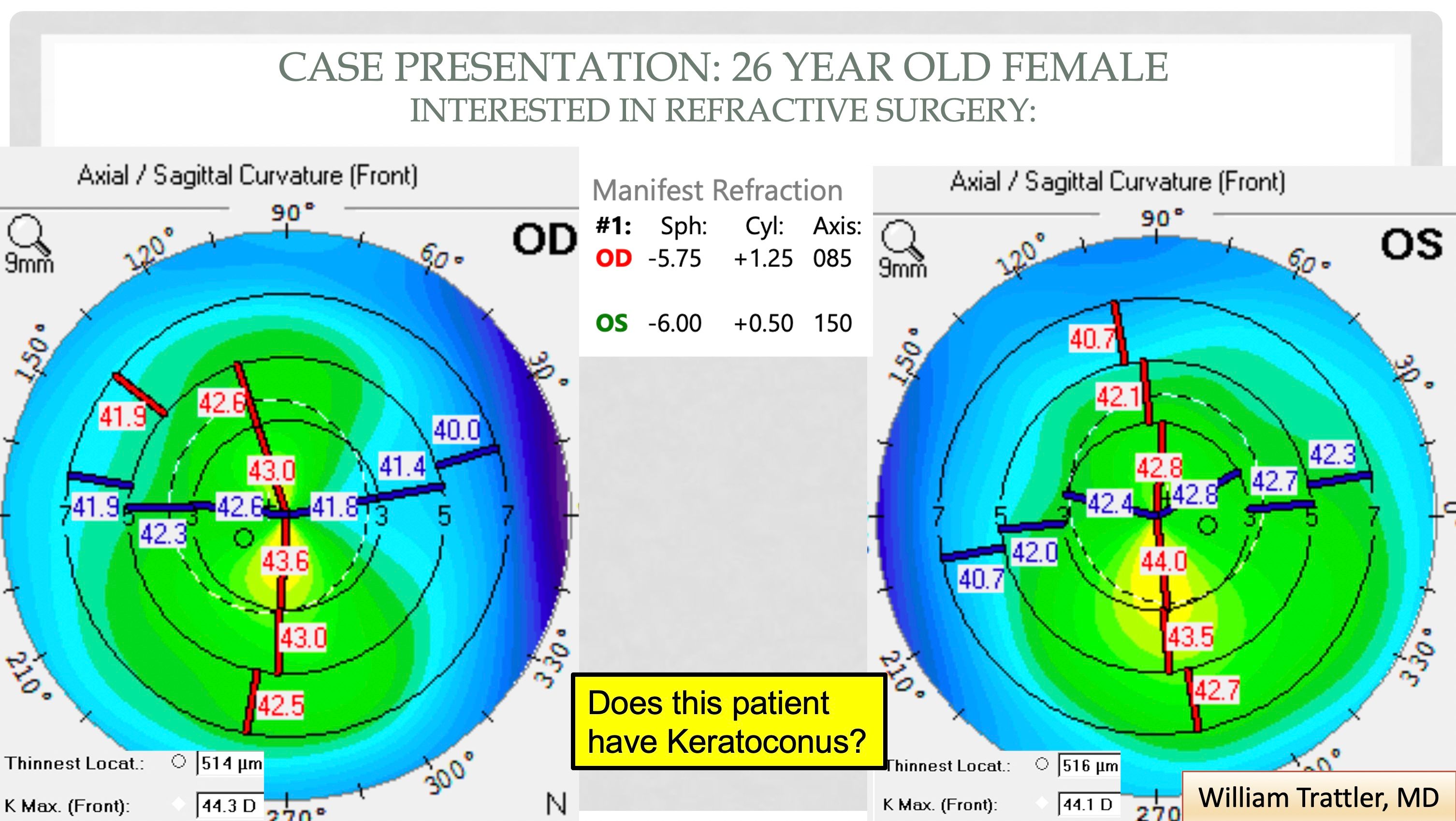Article
Genetic testing: Key to identifying keratoconus suspects
Author(s):
A team of investigators has found that the eye disease is more prevalent than first thought.

Reviewed by William Trattler, MD
Keratoconus has been thought to be a rare corneal disorder, but it actually occurs frequently. The prevalence rates worldwide range from 0.05% in the US to a startling 4.79% in Saudi Arabia, with India, Israel, and Iran having prevalence rates averaging 2.4%.
These frequencies suggest that patients with keratoconus may be presenting often in clinic and that ophthalmologists should be aware of this, according to William Trattler, MD, from the Center for Excellence in Eye Care in Miami, Florida.
Late to the party
A problem with keratoconus is that it is often identified late. Slit-lamp examinations can look normal in patients with mild disease, and the signs appear only once the disease has progressed to the moderate to severe stages.
“A challenge is that patients can often see reasonably well even with some irregular astigmatism that is present in early keratoconus,” Trattler pointed out. “Patients can have 20/20 uncorrected visual acuity, despite the presence of keratoconus, which is why they are diagnosed late. Significant corneal shape changes can develop before significant vision loss.”
Trattler suggested performing more topographic screening if there is even a slight suspicion of keratoconus.
Genetics of keratoconus
A series of genes, ie, susceptibility genes, have been associated with the disease—specifically, more than 2000 polymorphisms in more than 75 genes or loci, he said.
A new FDA-approved test has become available from Avellino Lab USA, Inc that evaluates more than 2000 variants in the 75 genes associated with keratoconus. The test uses an integrative weighted scoring model to calculate the degree of keratoconic risk for a patient. The test was evaluated in a cohort of 547 patients with keratoconus and 274 controls.
Keratoconus suspect
Trattler described the case of a 26-year-old woman with almost –6 diopters of myopia with +1.25 diopters of astigmatism in the right eye and +0.5 diopter in the left eye. The patient had expressed an interest in undergoing refractive surgery.
He pointed out that the topography was slightly suspicious with some mild inferior steepening bilaterally. The corneal thicknesses were 516 μm and 514 μm in the right and left eyes, respectively, and the K value was 44.
Trattler considered her a keratoconus suspect without obvious disease. The percentage thickness increase was slightly abnormal bilaterally and the Belin-Ambrósio enhanced ectasia total deviation index scores were borderline.
Genetic testing scores can range from 0 indicating low genetic risk to 100 indicating high genetic risk, and this patient showed a score of 4, indicating a low risk for keratoconus.
“Because of this genetic test, I felt comfortable offering her laser vision correction (PRK) because of the low-risk score,” he said.
Trattler concluded that keratoconus is a progressive disease that is more common than once thought.
“Ophthalmologists should identify keratoconus before the patient undergoes corneal refractive surgery early in the disease course,” he said. “Genetic testing also can be useful for family members of patients with keratoconus and for LASIK candidates.”
William Trattler, MD
E: wtrattler@gmail.com
This article is adapted from Trattler’s presentation at the virtual Real World Ophthalmology meeting. He reported a financial interest in Avedro/Glaukos and CXLO and is a speaker for Oculus.





